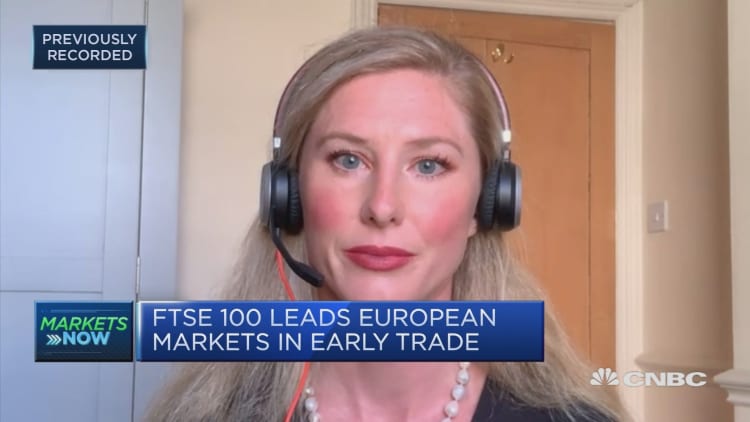The Bank of England is expected to expand its quantitative easing program on Thursday, but economists do not expect negative interest rates to be implemented this time around.
The Bank's latest monetary policy decision comes as the U.K. economy attempts to recover from an unprecedented 25% contraction across March and April as lockdowns forced by the coronavirus pandemic hammered economic activity. Although a modest recovery appears to be underway, economists expect that the central bank has more work to do.
Since the start of the pandemic, the BOE has cut rates twice from 0.75% to 0.1% and announced £200 billion ($247.55 billion) of new quantitative easing, bringing its bond-buying program to a total of £645 billion.
Expanding quantitative easing
When the Bank's Monetary Policy Committee (MPC) pledged to add the most recent £200 billion in March, two policymakers voted to add an additional £100 billion to the Asset Purchase Facility (APF) target.
In a note Monday, ING Developed Markets Economist James Smith pointed out that with the size of the APF now at £598 billion at the last count, the £645 billion would likely be exhausted by July. Smith therefore suggested that the extra £100 billion is now the consensus call for this week.
"That would allow purchases to continue until early September, which may well mean policymakers need to top-up again in August," Smith said.
"That's not ideal, and we suspect we could see a more sizeable — perhaps £150 billion — expansion, allowing purchases to continue until early October."
Furlough scheme 'masking the fallout'
Paul Dale, chief U.K. economist at Capital Economics, said in a note Monday that the government's furlough scheme is "masking the true fallout" from the crisis, and forecast that unemployment would remain above 5% through 2022 with the effects continuing to linger, meaning the BOE will need to deploy another £350 billion of QE over the next year.
Headline inflation slipped to 0.5% in May from 0.8% a month earlier, and ING expects this inflation gauge to stay between 0-0.5% until the fall, and probably below 1% through to the beginning of 2021.

The U.K. has avoided the spike in unemployment seen in the U.S. in large part due to the government's furlough scheme, which subsidizes 80% of the wages for employees furloughed as a result of the pandemic. However, there is some concern over what may transpire when this state support is unwound.
Emma Wall, head of investment analysis at Hargreaves Lansdown, told CNBC Wednesday that the BOE is likely planning its strategy for six months in advance, as the U.K. economy is currently supported by "short-term measures" such as the furlough scheme.
"Once that comes to an end, the downward pressures on inflation, the unemployment, the economic situation will be a lot more stark, and so they are really having to be thinking not just about this month, but the coming six months and what needs to be done to support the economy through that transition," she said.
Negative rates 'unlikely' for now
Bank of England Governor Andrew Bailey told a parliamentary committee in late May that the possibility of taking Britain into negative rate territory was under "active review."
Smith does not expect any changes to interest rates this week, but suggested that the minutes from the MPC's meeting will be interesting reading for investors in terms of the Bank's thinking on the subject, and said the appeal of such a policy would be understandable.
Negative rates effectively pay businesses and individuals to borrow money and penalize banks for depositing cash, therefore in theory encouraging them to invest and spend more — actions that help the economy to grow. They are currently in place in the euro zone and Japan, but the U.S. Federal Reserve has so far been vocal in ruling out negative rates for the foreseeable future.

With U.K. investment underperformance since the Brexit referendum now exacerbated by the Covid-19 crisis, ING expects productivity growth to remain minimal and the neutral rate of interest to fall, meaning the level of benchmark interest rates become "decreasingly stimulative."
However, Smith argued that it was unclear how negative rates would remedy this, given the well-documented difficulties with bank profitability if retail deposit rates are pulled below zero.
"The results of the policy in Europe and Japan also haven't been spectacular, and we know that the main problem over coming months is likely to be credit demand — or a lack of it," Smith said, adding that modest changes in the Bank rate are therefore unlikely to catalyze spending and investment.

